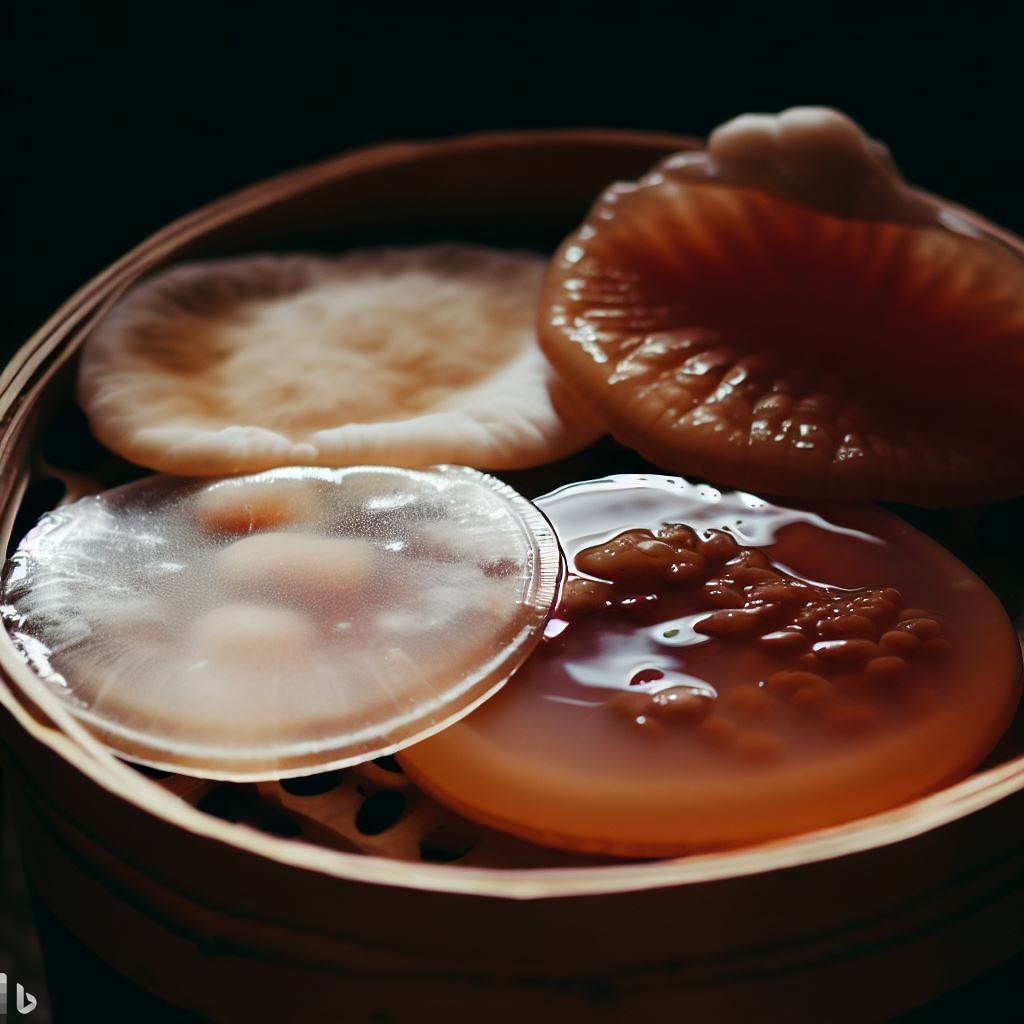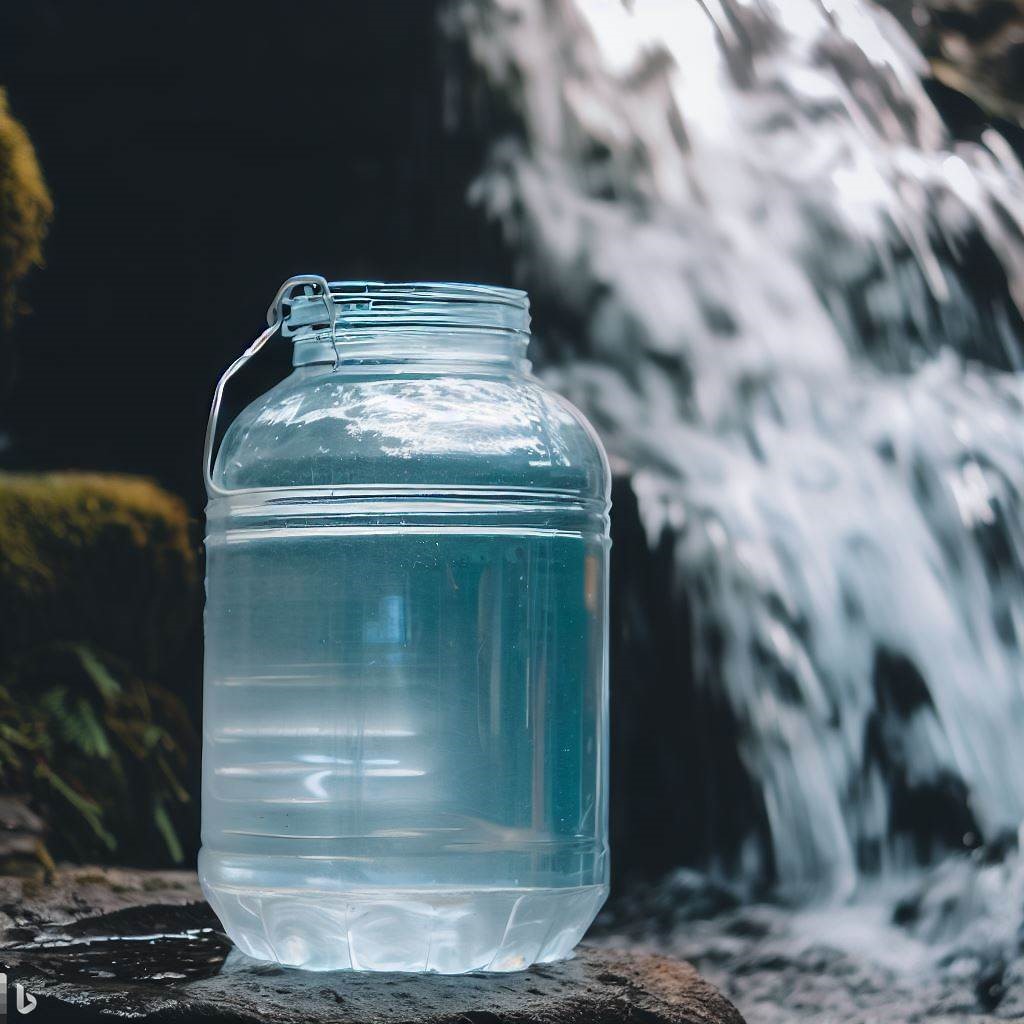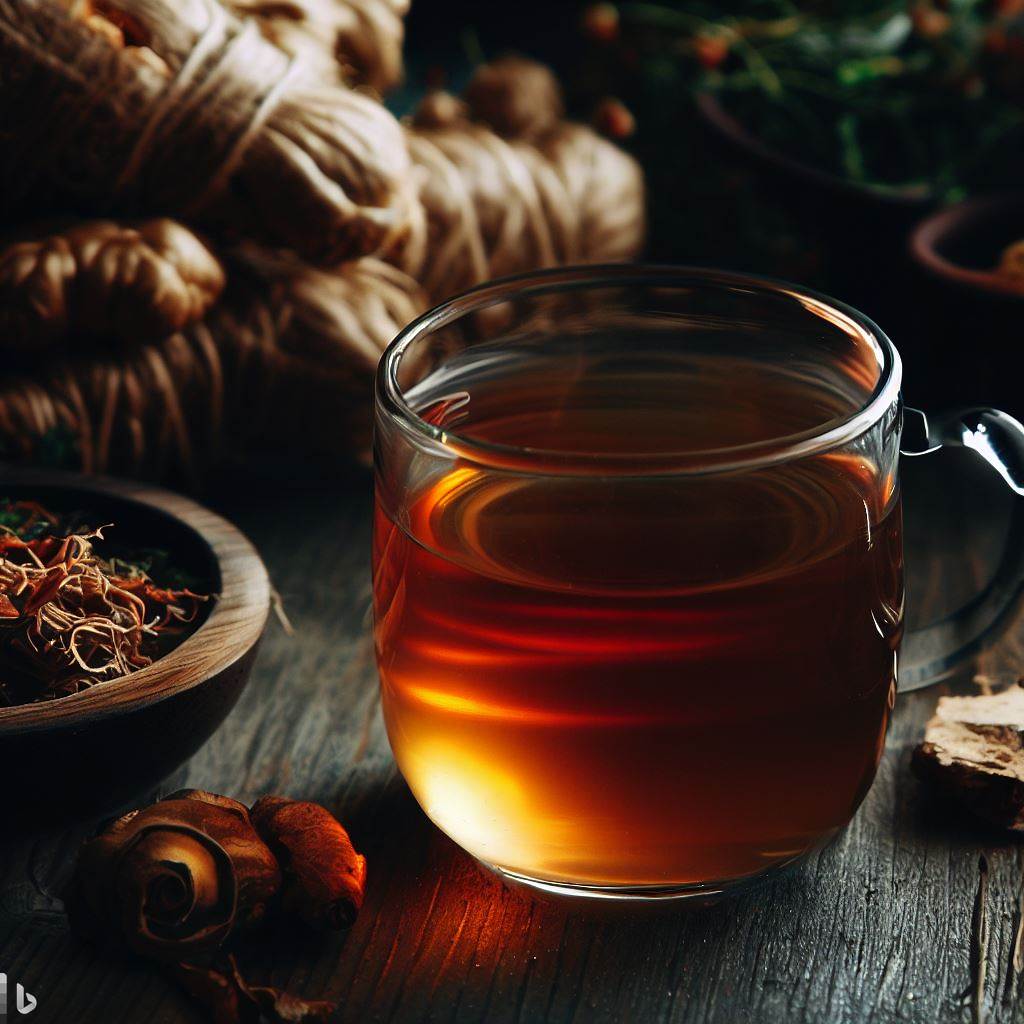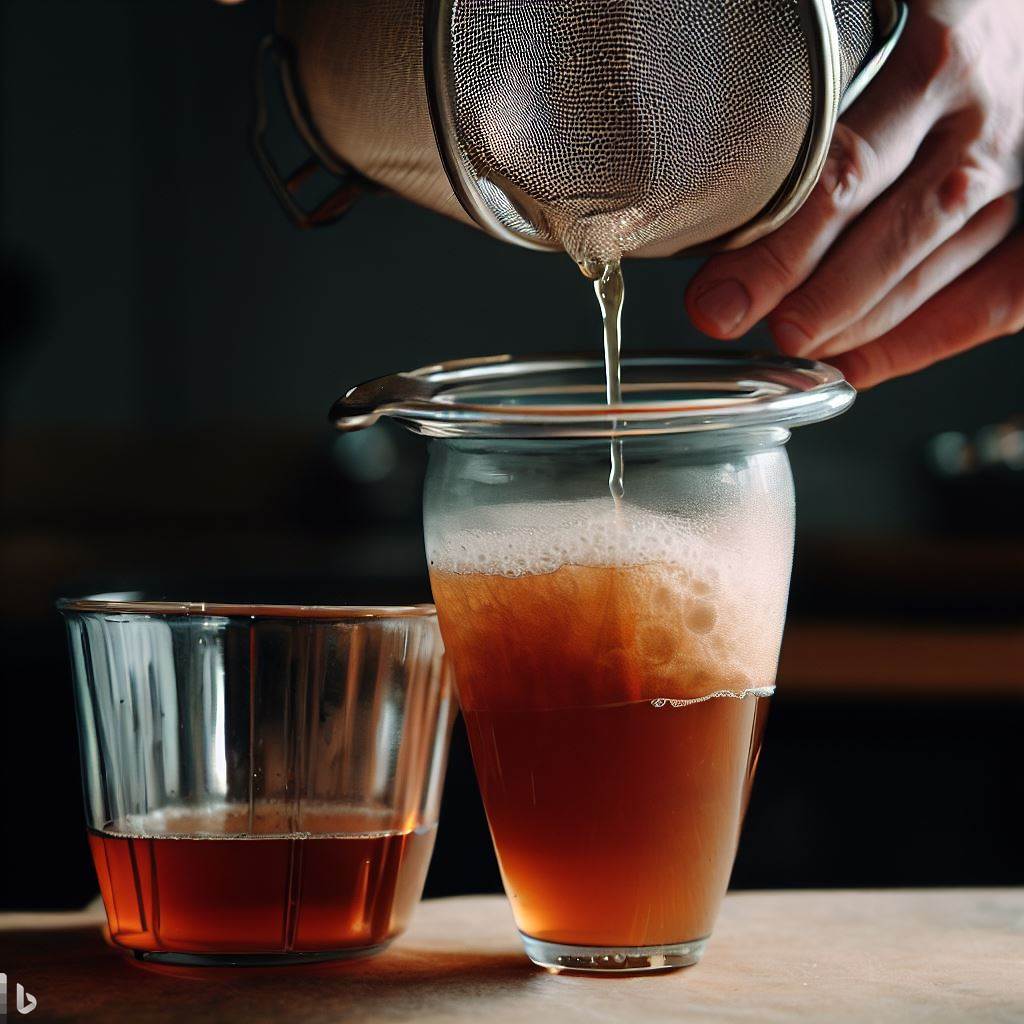As a kombucha enthusiast, you’ve likely heard of the term “SCOBY.” But do you know the details of a the Kombucha SCOBY life cycle? Today, we’re diving into the captivating world of the SCOBY, the heart and soul of your favorite fermented drink, kombucha.
The term “SCOBY” stands for Symbiotic Culture Of Bacteria and Yeast. It’s a living, breathing entity that transforms sweet tea into the tangy, fizzy kombucha we all love. Picture the SCOBY as the bustling city where the bacteria and yeast reside, working together to create something truly magical.
The Fascinating Journey of a SCOBY: The Birth of Kombucha
The life of a SCOBY begins with a simple combination of tea, sugar, and some pre-made kombucha. This mixture is left to ferment in a warm, undisturbed environment. The magic starts to happen when the yeast in the kombucha begins to consume the sugar, producing alcohol and carbon dioxide. This process is known as fermentation.
As the yeast works its magic, the bacteria step onto the stage. They consume the alcohol produced by the yeast, converting it into acetic acid. This gives kombucha its distinctive tangy flavor. During this process, the bacteria also produce cellulose, which forms the physical structure of the SCOBY.
As the SCOBY Grows
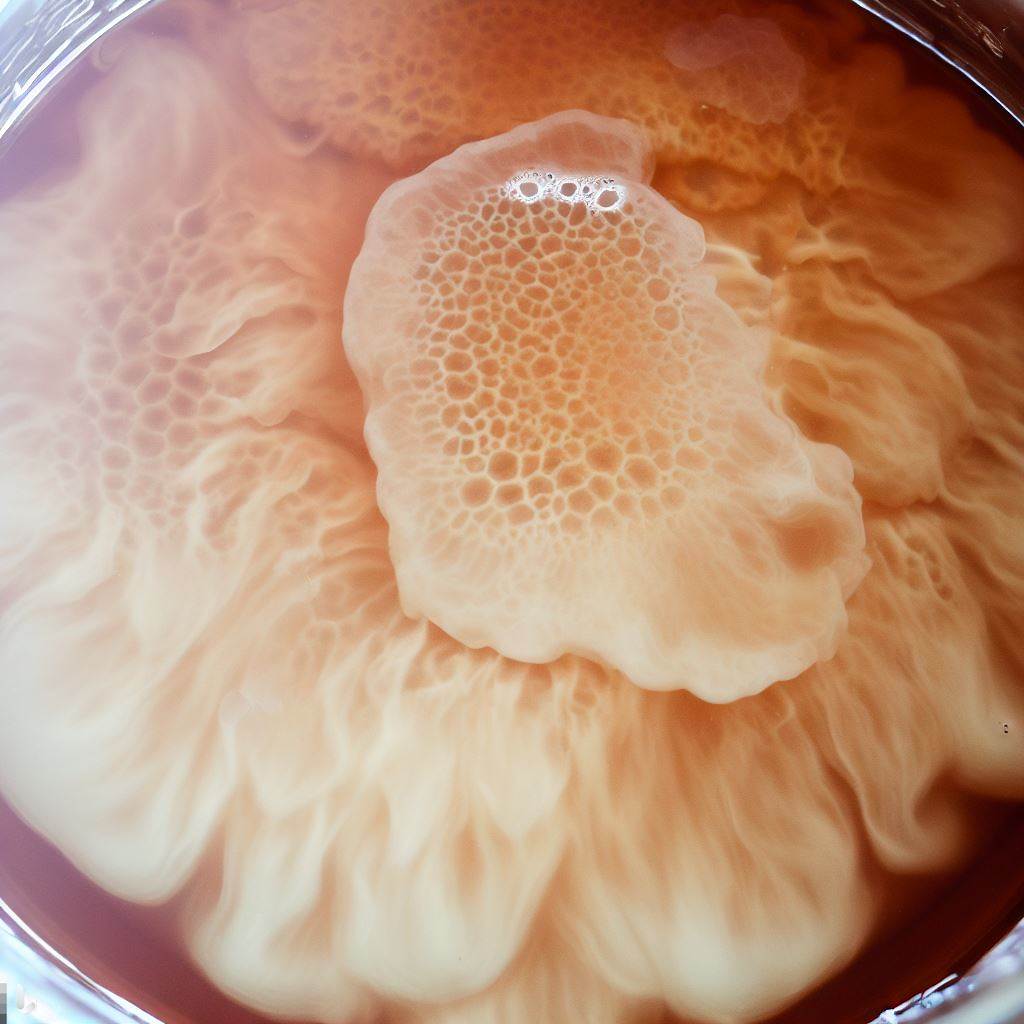
Over time, this cellulose layer thickens, creating a rubbery disc that floats on the surface of the kombucha. This is the SCOBY we’re familiar with. It acts as a protective barrier for the fermenting kombucha, sealing it off from outside contaminants while providing a home for the yeast and bacteria.
The SCOBY’s life cycle doesn’t end here. With each new batch of kombucha, a new layer of SCOBY forms on the surface of the old one. This means that your SCOBY is constantly renewing itself, growing stronger and more efficient with each brew.
The Mid-Life Magic: Unveiling the Kombucha SCOBY Life Cycle
Now, we’ll delve into the fascinating mid-life stage of the kombucha SCOBY life cycle, a phase teeming with activity and transformation.
The Mid-Life Stage: A Time of Transformation
The mid-life stage of a SCOBY is a period of intense activity. It’s during this phase that the SCOBY is at its most productive, converting sugars into various acids, enzymes, and vitamins. This process not only gives kombucha its distinctive taste but also its reputed health benefits.
The SCOBY’s mid-life is characterized by rapid growth and division. As the SCOBY thickens, it often forms layers, which can separate to create new SCOBYs, often referred to as “babies.” These new SCOBYs can be used to start additional batches of kombucha, shared with friends, or stored as backups.
The Role of Environment in SCOBY’s Mid-Life
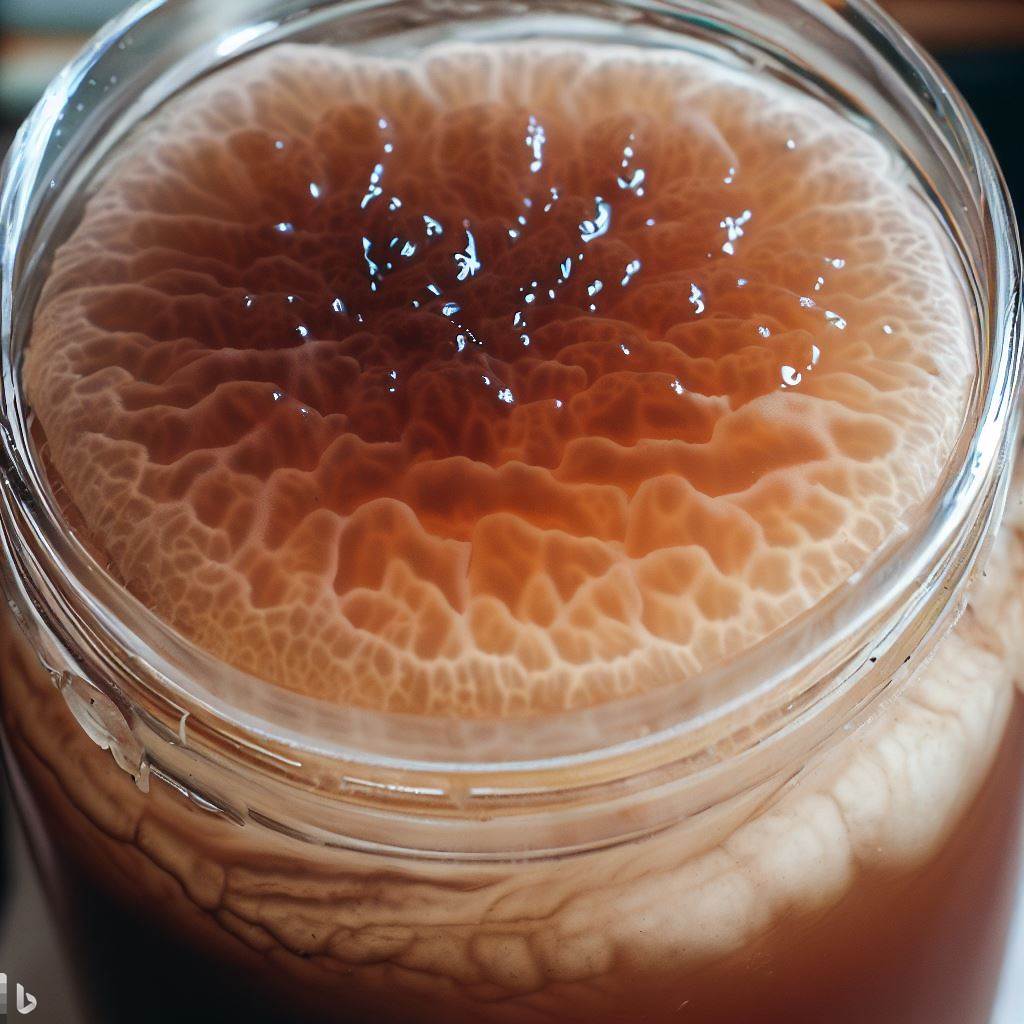
The environment plays a crucial role in the SCOBY’s mid-life stage. Optimal brewing conditions, including a temperature range of 72-80°F (22-27°C) and a pH level below 4.6, are essential for the SCOBY’s health and productivity. Any significant deviation from these conditions can slow down the fermentation process or, worse, invite unwanted mold growth.
The Magic of Mid-Life: Flavor Development
The mid-life stage is also when the magic of flavor development happens. As the SCOBY metabolizes the sugars in the tea, it produces a range of organic acids that contribute to kombucha’s unique flavor profile. Acetic acid gives kombucha its vinegar-like tang, while gluconic acid adds a hint of sweetness. The longer the fermentation, the more pronounced these flavors become.
The Mid-Life Legacy: SCOBY Care and Maintenance
Taking care of your SCOBY during its mid-life stage is crucial. Regularly check for signs of mold, keep the brewing vessel clean, and maintain the optimal brewing conditions. Remember, a healthy SCOBY is the key to delicious and nutritious kombucha.
The mid-life stage of the kombucha SCOBY life cycle is a dynamic period of growth, transformation, and flavor development. It’s a testament to the remarkable adaptability of this symbiotic culture and its central role in creating the beloved beverage, kombucha.
The Life Cycle of a Kombucha SCOBY: When is it Time to Retire?
As a passionate kombucha brewer, you’ve likely marveled at the unique, rubbery disc known as the SCOBY (Symbiotic Culture Of Bacteria and Yeast). This living entity is the heart of your kombucha brew, transforming sweet tea into a tangy, effervescent beverage. But have you ever wondered about the life cycle of a kombucha SCOBY and when it might be time to retire it? Let’s dive into this fascinating topic.
Recognizing the Signs of an Aging SCOBY
An aging SCOBY isn’t necessarily a bad thing. In fact, a well-cared-for SCOBY can last for many years and produce countless batches of delicious kombucha. Although we would say most SCOBYs last at least around a dozen batch brews. However, there are signs to watch for that indicate your SCOBY might be nearing the end of its productive life.
If your SCOBY develops mold, it’s time to retire it immediately. Mold can be harmful and is a clear sign that something has gone awry in your brewing process. Another sign is if your SCOBY is continuously struggling to ferment. If your kombucha isn’t turning out as expected, it might be time to consider starting fresh with a new SCOBY.
The Retirement of a SCOBY
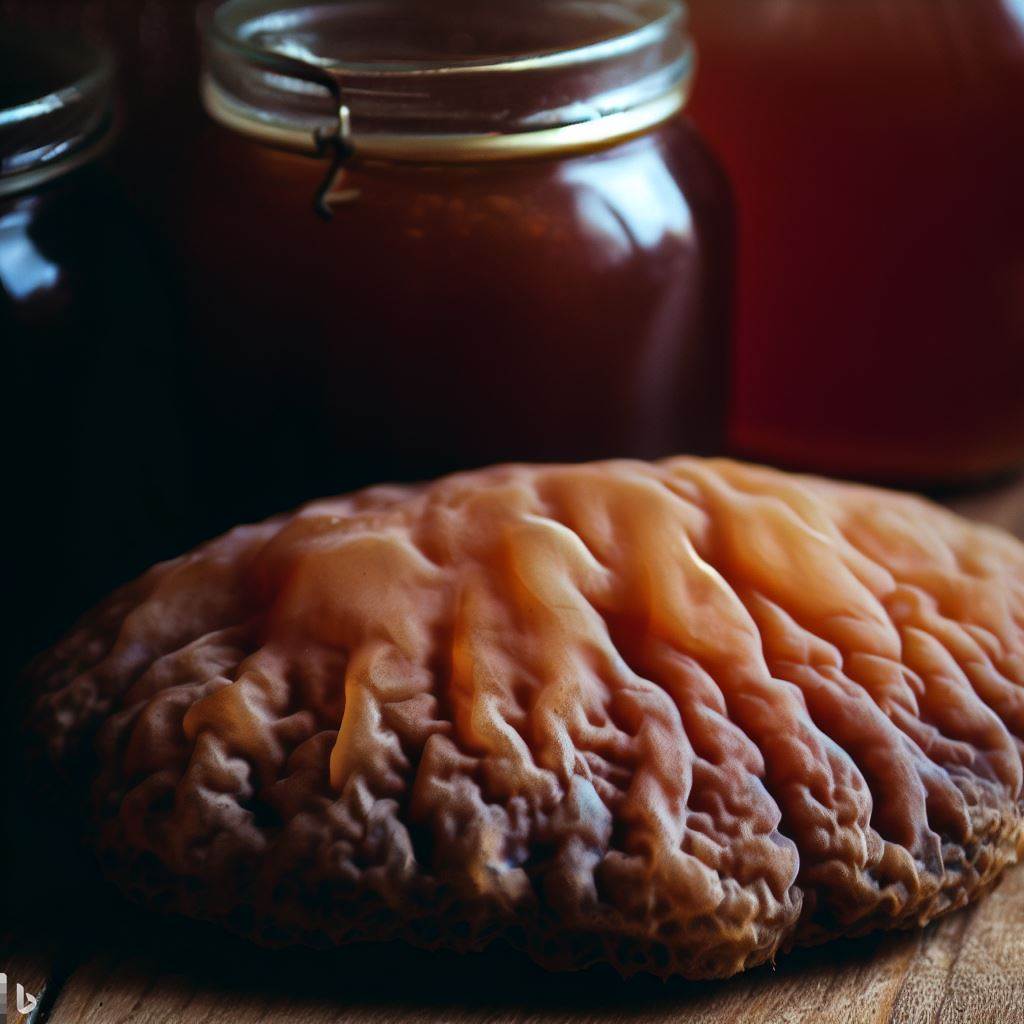
Retiring a SCOBY doesn’t mean it’s useless. In fact, the microbial cellulose can be fashioned into various items, from dog treats to clothing. However, for the purpose of brewing kombucha, it’s time to say goodbye and start anew. Remember, the retirement of a SCOBY is a natural part of the kombucha brewing process. It’s a sign of your growth and experience as a brewer. And with each new SCOBY, you’re embarking on a fresh journey of fermentation and flavor exploration.
Conclusion
In conclusion, understanding the life cycle of a kombucha SCOBY is crucial for every kombucha brewer. The life cycle of a SCOBY is a fascinating journey of symbiosis and transformation. It’s a testament to the power of nature and the intricate balance of life. So, the next time you take a sip of your favorite kombucha, take a moment to appreciate the incredible journey that the humble SCOBY has undertaken to bring you that delightful sweet yet tangy flavor.
Now, we’d love to hear from you. Have you ever tried brewing your own kombucha at home? What was your experience with the SCOBY? Share your stories in the comments below!
Thanks for reading on the Life Cycle of the SCOBY. Read additional articles from GMK:

